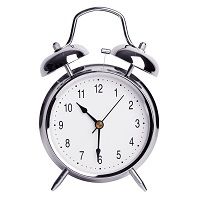Clot-busters Safe in Wake-Up Strokes
Patients who have strokes during their sleep pose a treatment conundrum. Since it is hard to assess when the stroke happened, physicians may not know whether to administer clot-busting tPA. The drug is thought to have a therapeutic window of 3 hours. A Texas study suggests tPA is safe for these patients even if the 3-hr window has closed.

Patients who have strokes during their sleep pose a treatment conundrum. Since it is hard to assess when the stroke happened, physicians may not know whether to administer clot-busting tPA. The drug is thought to have a therapeutic window of 3 hours.
But a University of Texas Health Science Center at Houston study found that giving these patients tPA an average of 2.6 hours after they awoke was safe—even though the stroke could have happened many hours earlier.
Presenting the study at the American Heart Association/American Stroke Association International Stroke Conference in Nashville, Tenn., Andrew Barreto, MD, said the tPA was given to 40 moderate severity wake-up stroke patients with a broad range of stroke severities and disabling deficits.
The average age was 60.
Among the treated patients, none experienced intracerebral hemorrhage—a dreaded side effect of tPA-- and half made full recoveries.
“IV thrombolysis appears to be safe,” he said, discussing the study at the conference, “wake-up strokes can safely be treated.”
The study size was small, and Barreto said the administration of tPA in wake-up stroke patients should be studied in a larger trial.
Two patients in the study died of cardiac causes, and 2 were excluded from the totals because their strokes were due to cocaine overdose and resulted in dissected arteries.